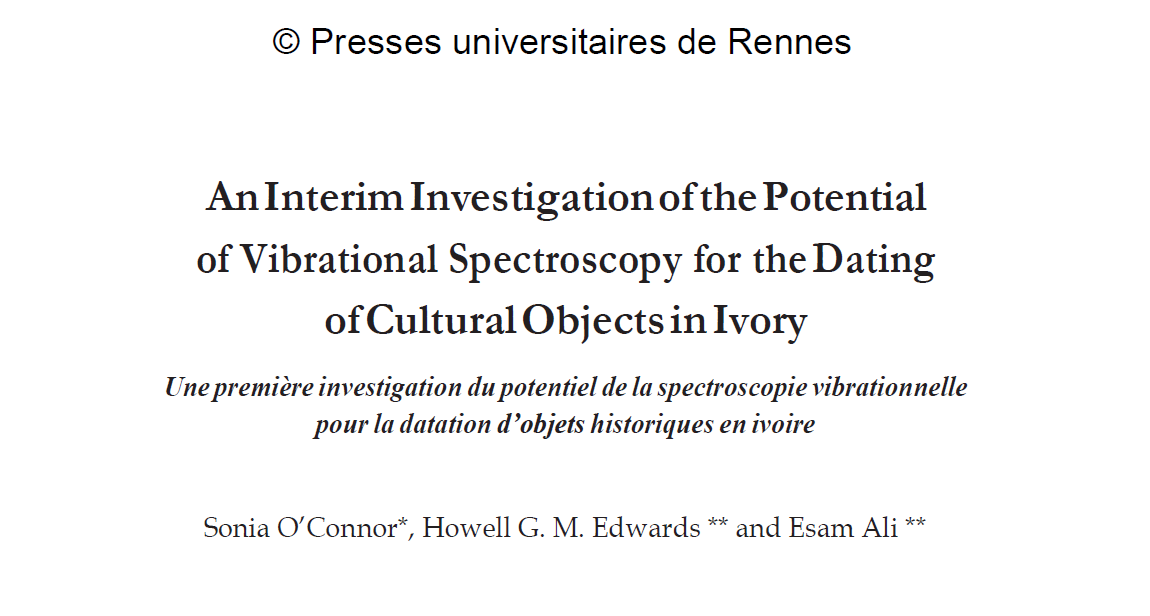Radiocarbon dating of ivory requires destructive sampling on a scale not always compatible with the requirements of the preservation
and curation of cultural objects. Th e development of a minimally-destructive dating technique is urgently needed. Raman spectroscopy can
detect the changes in the organic and inorganic molecular components of ivory that occur with time. It has been suggested that these vibrational
spectroscopic changes could be used to assess the relative date of mammoth ivories, assuming that the state of preservation of the ivory is directly
related to its age. Th is paper tests this assumption with specimens of mammoth ivory of known date and burial environment and concludes that
the vibrational spectra of ivory cannot in general be used to deduce the age of the specimen.


